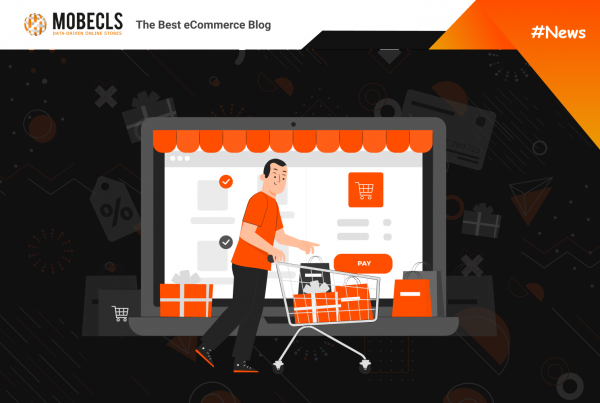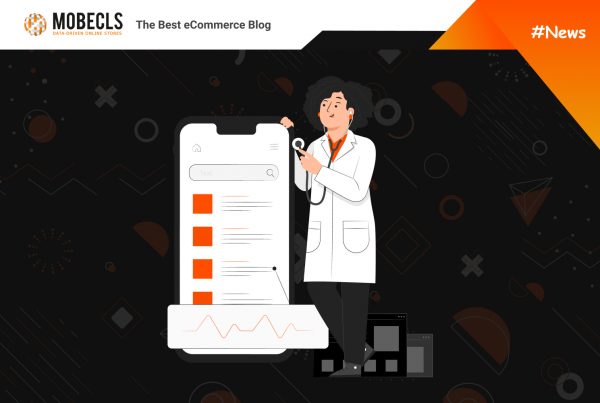How Did Amazon Start
May 1994, Jeff Bezos was sitting in his office and was thinking that he wanted to start an eCommerce business. The main question was “What should I sell?”. He went through numerous options but didn’t come to a single one. Suddenly, his wife called him. His spouse MacKenzie Bezos, an American novelist, was working on another novel. Bezos just lit up: “Books! Exactly, I need to sell books! They don’t require any warranty service or testing”. The next day, he quit D.E.Shaw and went to his father for “investments.” His father, who infinitely loved him, gave his son all the money accumulated at that time – about $300.000.
That money was still not enough. Bezos developed a business plan and went with his wife to Seattle for investor assistance. In parallel, he was resolving legal issues regarding the registration of the company.
Bezos hired Shel Kaphan, a top-notch programmer, and rented a small room. This room became the Amazon office. There were only three computers – for Shel, Jeff, and MacKenzie. Jeff’s wife was entrusted with organizational and accounting matters at the company. It was the time when Amazon began to develop their own website.
Bezos was the first who introduced a review system. However, his suppliers tried to dissuade him, stating that negative reviews would scare away customers. Nevertheless, Amazon’s sales continued to grow, and the site’s traffic increased due to user interaction.
Forming Ideology
In the World Report interview, Jeff said:
“In business, you can focus on competitors or customers. Those who focus on competitors, lose the initiative”.
That’s one of the main reasons why Amazon is so successful.
Amazon’s concept is encrypted in its name and logo. Firstly, letter A stands at the very beginning of the alphabet and provides the company with the first positions in various directories. Secondly, Amazon is the largest river in the world. It’s metaphorically comparable to the Internet: the eternal stream. The smile-arrow under the inscription, which appeared in 2000, symbolizes that you can find everything in Amazon’s catalog: from A to Z.
Amazon marketing strategy includes 6 core components:
- Goods and services in the public domain;
- Client-friendly interface;
- The expansion comes from small to large;
- International branch offices;
- Modern methods of communication;
- Universal behavior and thinking.
Amazon carefully approaches its marketing campaigns, adapting to the changing market. The company focuses on Internet communications, close partnerships (for example, with Target, Bebe Stores, Sears Canada Timex Corporation and Marks & Spencer), constant statements about the high-quality of its products and some additional services like Fulfillment By Amazon (FBA, eCommerce). Amazon seeks to outperform the market. That’s why Amazon has so many followers.
Internet Giant
May 12, 1997. Bezos receives a lawsuit from his competitor Barnes & Noble, who accused Amazon of replicating the false wording “Amazon is the world’s largest bookstore”. It was just three days before the Initial Public Offering. They stated that it wasn’t a shop at all but just an intermediary. The conflict was resolved in the pretrial order and Bezos continued to call his store the largest one. On May 15, Amazon entered the IPO, and it was rated as successful. The store’s profit in the last quarter of that year was $66 million.
1998 marked the expansion of the company. Amazon’s sales at the beginning of the year accounted for 1% of all books sold in the United States. It was ranked among the three largest book retailers, selling more than 55,000 titles every day.
Acquisitions and Lawsuits
On October 15, Amazon acquires bookpages.co.uk (later amazon.co.uk) – an English company becomes the official representative of Jeff’s company. Besides, at that time a new branch office opens in Germany. In the same month, Amazon receives a new lawsuit from Walmart. They were claiming that Bezos had stolen Walmart’s trade secrets by hiring former company’s employees. This case also didn’t come to court, but it caused several changes inside Amazon.
Range Expansion
In 1998 Amazon begins to sell audio and video products.
In October 1999, amazon.com becomes one of the 25 most visited Internet sites (about 1.9 million daily visits). Its customer base counted more than 1 million people. The company grows rapidly, but at the same time, the business plan doesn’t anticipate quick income and is designed for the long term. This fact sometimes causes investors’ dissatisfaction.
Nevertheless, it’s believed that this strategy helped the company to survive the dot-com crisis. Although with a loss of half a billion dollars. In 1999, due to this “Victory”, Jeffrey Bezos was called Time Person of the Year.
Promotion
Today, Amazon strategy is to actively use Google AdWords, paying for every transition. The company doesn’t see any points in “big, screaming banners,” betting on contextual announcements that lead millions of visitors to the store.
Amazon spends millions of dollars to continually improve its interface capabilities. The Internet is an environment that requires daily changes. In 2001, amazon.com outstripped the closest pursuers in terms of usability by 65%. Besides, Amazon pays great attention to the mobile version of the site.
In the fourth quarter of 1999, Amazon spent $80 million on offline advertising, next year – $50 million, in 2008 $36 million, and by August 2009 the share of offline dropped to $9.4.
Special attention in the marketing strategy is paid to affiliate programs. Entrepreneurs can place a link to specific Amazon products on their websites and receive money for each transition.
Best Products
One of the most famous Amazon products is Amazon Kindle. According to the Bezos, he didn’t spend a cent on its advertising. Everything was made by customer reviews.
Alexa is Amazon’s virtual assistant. The possibilities of Alexa are far from being limited to playing music. With the help of a virtual assistant, you can:
- Make lists of meetings and events for the current day or for the whole week using Google Calendar;
- Manage a smart home;
- Find out the weather, news, sports scores, interesting facts;
- Call taxi;
- Use entertainment services from third-party developers;
- Create Spotify playlists;
- Make cocktails with The Bartender app.
In 2015, Amazon launched its own payment service. It aims to interact with online merchants and various companies. That payment system is called Amazon Payments.
With its help, all Amazon shoppers (300 million active users) can use the payment data stored on amazon.com for transactions. You can pay not only goods but also services of third-party suppliers.
Final Thoughts
Jeff Bezos has changed the face of eCommerce and defined the way of shopping in the 21st century. He proved that if you offer great customer service you rule the market. Review system, express checkout, even delivery self-driving cars and drones. All these ideas aim to enrich the user experience and make them worship your brand. If customers are the heart of your company, you’ll succeed. May be someday, someone will beat Amazon, but today they outstand all the world.
More success stories: Coca-Cola, IKEA, NIKE



